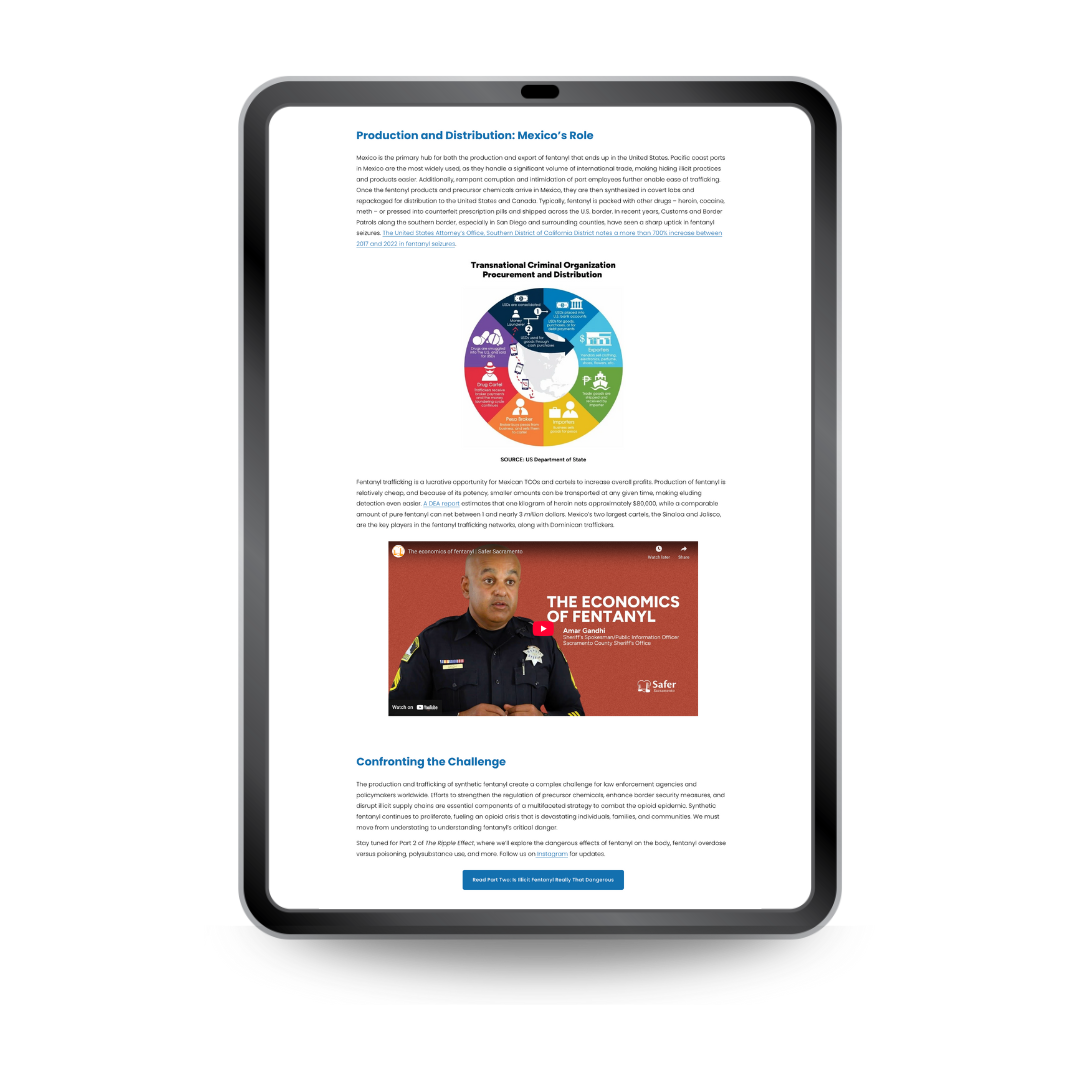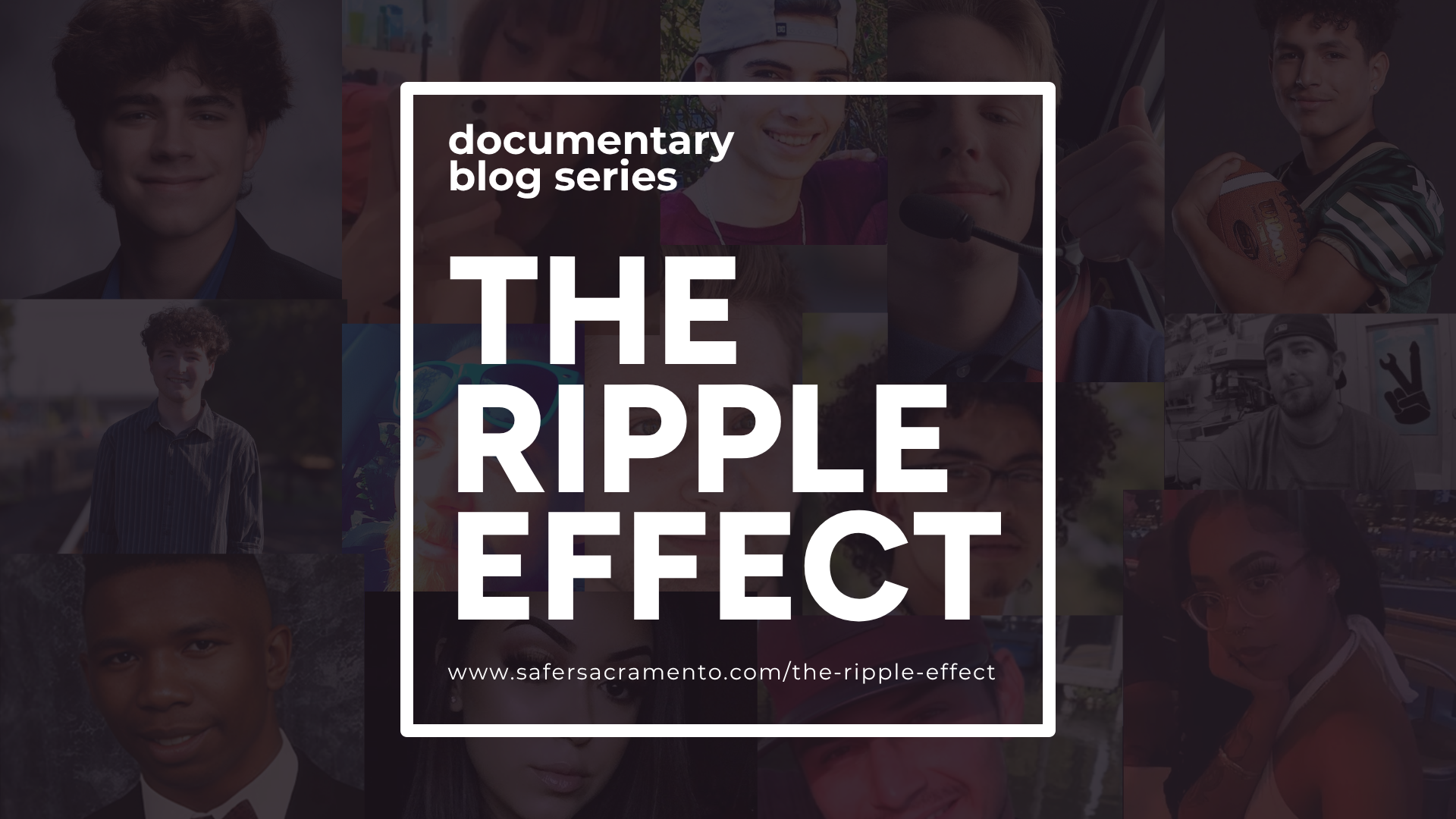
Our exploration of the fentanyl crisis took a different approach – one rooted in storytelling, compassion, and easily digestible, short-format narrative bites that align with audiences’ preferences on social media.
The Ripple Effect is a nine-part documentary blog series that sheds light on the harrowing reality of the fentanyl crisis in the U.S. and its impact on Sacramento County in particular. Each installment delves deep into the multifaceted aspects of this epidemic, exploring its origins, impact on families and the community, and the relentless efforts to combat the crisis.
Our goals included:
• Educating the community about the dangers of illicit fentanyl through storytelling and fact-based information
• Connecting citizens of Sacramento County with treatment, recovery, and mental health services
• Collaborating with other county agencies and creating partnerships with local organizations to decrease deaths related to fentanyl overdose and poisoning
• Driving website traffic to the county support pages so individuals could connect with the services they needed
Our Why:
At the time we began this project, headlines about illicit fentanyl were inescapable. As is the case with many current issues (e.g., around opioids, gun violence, and climate change), the sheer volume of information and media saturation can desensitive an audience. With overdose and poisonings rising at an alarming rate, we wanted to create something that would cut through the noise. Breaking through audience apathy and emotional burnout requires fresh angles and compelling storytelling. It’s the reason we decided to use a short-format documentary style to present the story in a new way and from a different perspective to really speak to our audience and prompt action.
Our How:
Like with any documentary production, we spent substantial time outlining the story, key elements, and audience journey to reflect what what we wanted: accurate, research based information, stories highlighting people with lived experiences, and direct links to treatment, recovery, and mental health services.
We also spent significant time shooting interviews in Sacramento County with administrators and policymakers, but knew that the essence of the series had to be rooted in sharing the stories of those impacted by illicit fentanyl: parents who lost children; siblings who lost a brother or sister; friends who lost their closest friend. This was the most difficult part of bringing The Ripple Effect to life: capturing the pain and raw emotion of people who had lost those they loved most. This epidemic is one of the darkest moments in the human experience, and sharing these moments with those who told their stories forever changed everyone who worked on this project.
We encountered a number of additional challenges while producing this piece:
Strategic approach: The series had to speak to multiple stakeholders: youth, parents, educators, health professionals, policymakers – in essence, the entire community. Tailoring content that resonated with each group while keeping a coherent narrative was inherently difficult.
Creative considerations: Series content needed to emphasize the seriousness of fentanyl without becoming fear-mongering or stigmatizing. Finding a tone that was informative and urgent, yet hopeful, was an ongoing editorial challenge. Documentary content relies heavily on real stories. But featuring real people affected by fentanyl overdoses or addiction, especially minors or grieving families, required sensitive handling and thorough vetting.
Ethical storytelling: There’s a fine line between storytelling and exploitation, especially when featuring trauma. Ensuring that ethical standards were met regarding informed consent and mental health support for participants was critical. Some community members may have viewed the series as overly political, stigmatizing, or sensational. Proactively addressing feedback and adjusting tone or messaging accordingly was essential for long-term impact and success.
The Ripple Effect wasn’t just a documentary blog series – it was an opportunity to save lives. Through raw, honest storytelling and deep community connection, it helped reduce fentanyl-related deaths in Sacramento County by 50%, the largest drop in the country. That number isn’t just a statistic – it represents lives saved, families kept intact, futures realized.
From the beginning, our mission was clear: help people find the support they need. Every installment carried a call to action – linking to resources for treatment and recovery. And people responded. We saw 19K+ clicks to the county’s support services page and 41K+ visits to educational content.
But the numbers only tell part of the story. 101K+ people engaged – not just with likes and shares, but with their hearts. They shared personal stories in the comments: those of grief, survival, and hope. Some were heartbreaking. Some were healing. And through it all, we connected them with services – bereavement support, trauma care, someone to say “I understand and want to help.”
We reached 1.8M+ people, ensuring no community was left behind. Our belief was simple: everyone deserves access to care, regardless of race, gender, socioeconomics, sexual orientation.
Audiences didn’t just skim – they stayed. With a 2:06 average time-on-page and 59K+ views, they immersed themselves in the stories. They saw themselves in them.
The Ripple Effect reminded us what storytelling can do. It built trust, sparked action, and created something rare: a sense of shared humanity in the face of crisis. And in doing so, it changed lives.



